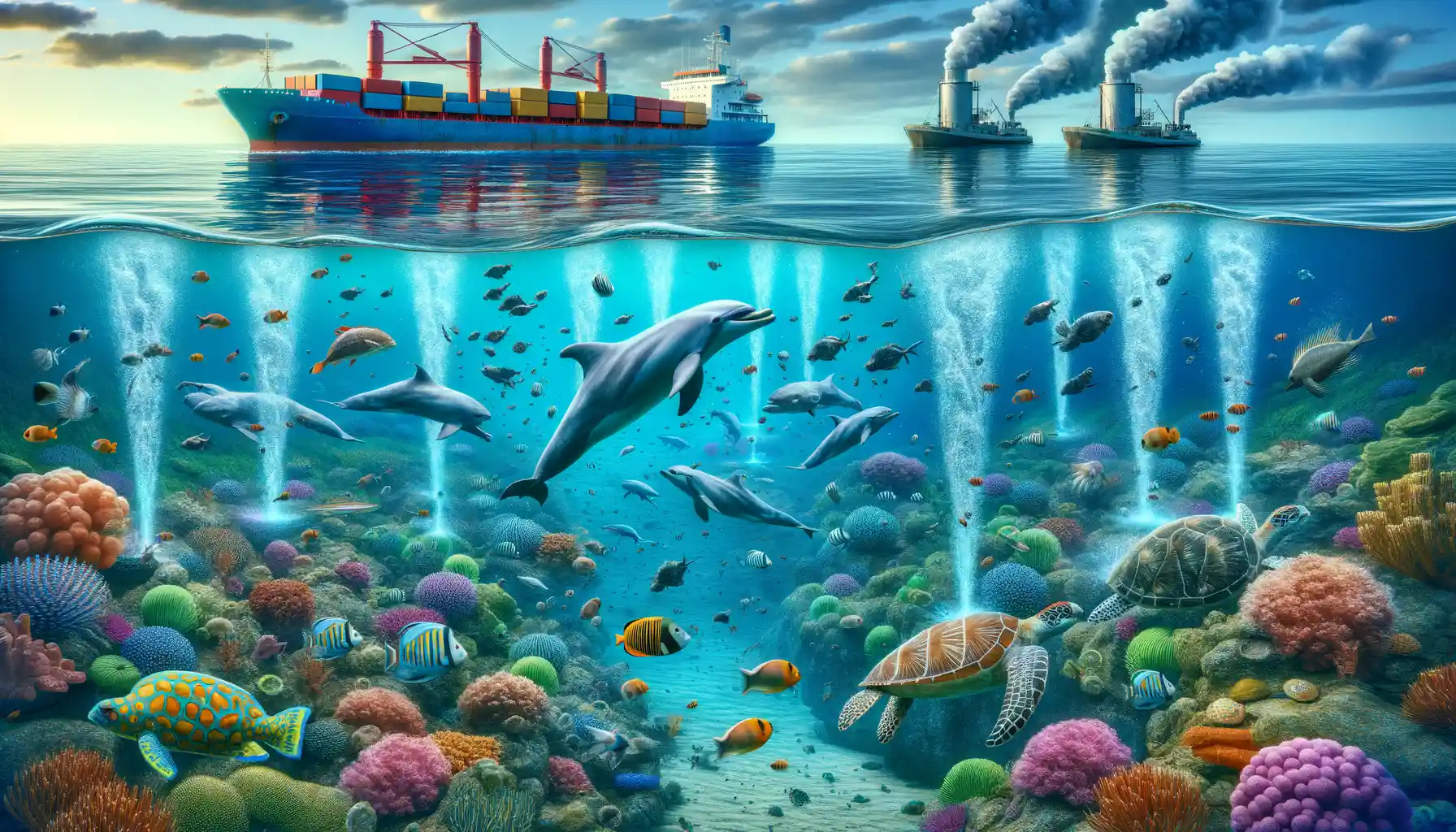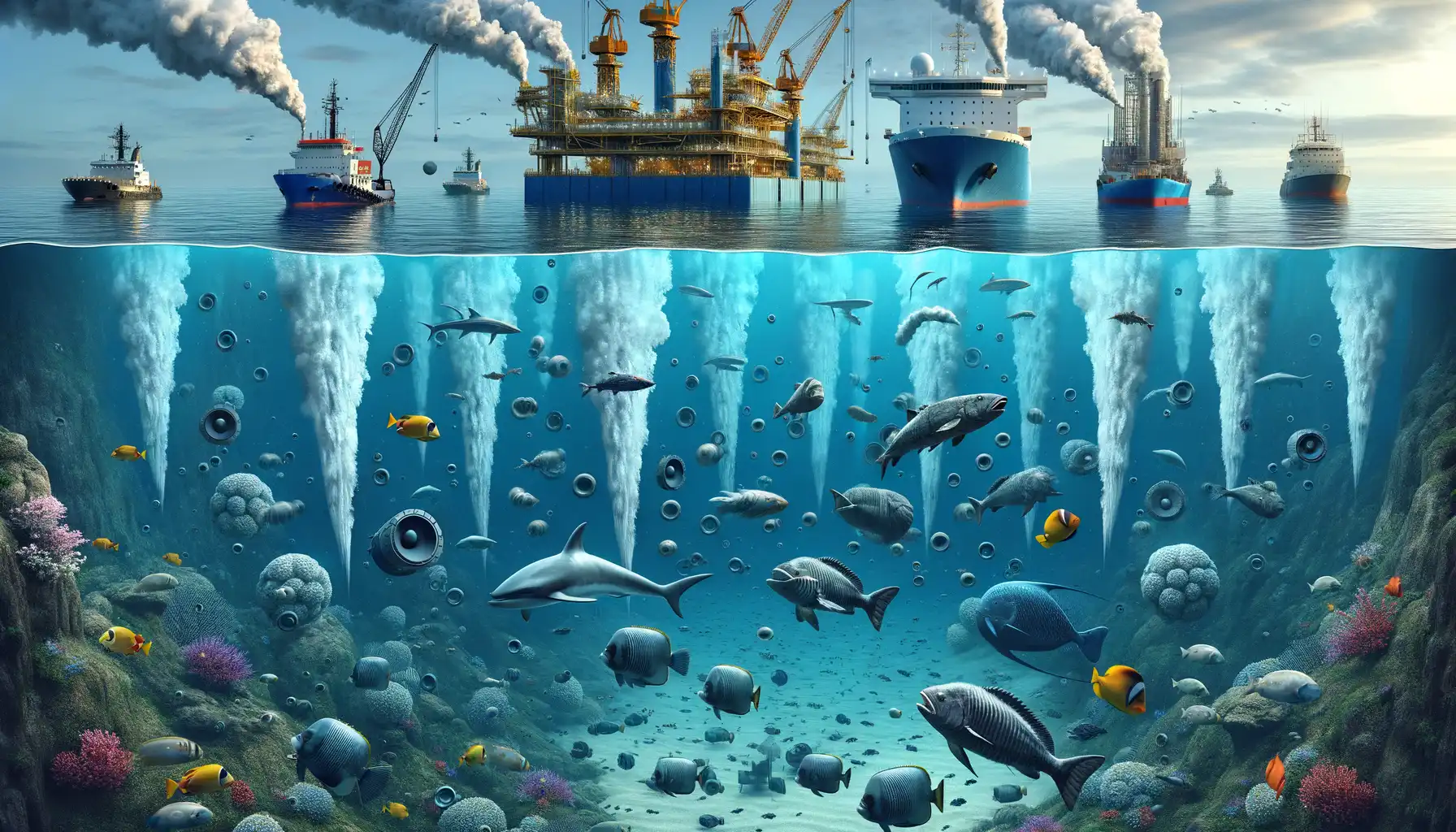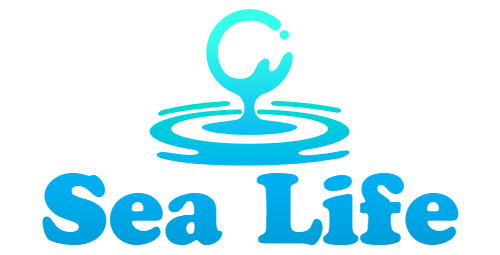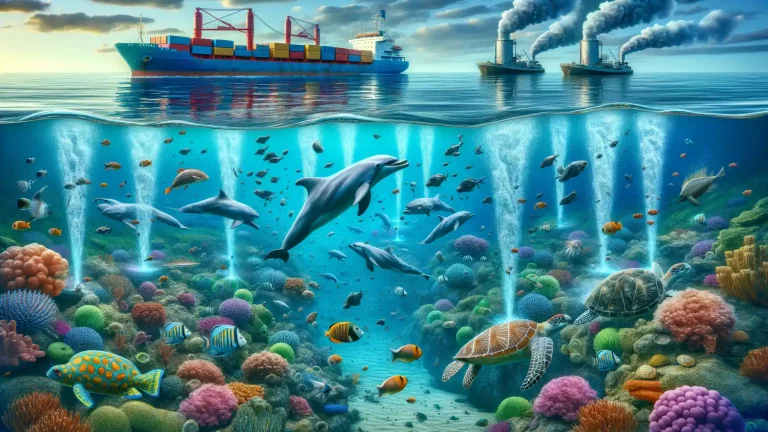Understanding Noise Pollution in the Marine Environment
The Hidden Symphony Underwater
Imagine you’re floating in the ocean. Not just hearing its surface whispers, but immersed, surrounded by a vast, vibrant orchestra. From the haunting calls of whales to the staccato clicks of dolphins and the faint crackle of snapping shrimp – the underwater world is alive with sound. For marine creatures, this isn’t just music; it’s their lifeline. They navigate, hunt, bond, and warn each other of danger through these natural symphonies.
But now, imagine a thunderous, dissonant noise interrupting the calm—a deafening ship engine, the relentless pounding of construction, or the blast of seismic airguns. Suddenly, life underwater becomes a chaotic, overwhelming cacophony. This is what we call noise pollution, and it’s far from just an inconvenience. For marine animals, it can mean disrupted behavior, lost communication, or even death.
Let’s Break It Down: Is It Really That Bad?
Consider these alarming examples:
- Whales stranded on shores after being disoriented by naval sonar.
- Fish fleeing feeding grounds due to the booming sounds of nearby drilling rigs.
- Seahorses, some of nature’s quietest architects, struggling to build amid constant vibration.
These aren’t isolated incidents—they’re echoes of a problem growing louder beneath the waves.
Effects of Noise Pollution on Marine Species

How Noise Pollution Disrupts Ocean Life
The ocean is a symphony. Imagine the soothing hum of whale songs, the rhythmic chatter of dolphins, and the crackling snaps of shrimp. But now, picture a deafening foghorn blasting over it all. That’s what noise pollution does to marine life — it hijacks their natural soundtrack and turns it into chaotic static.
For animals like whales and dolphins, sound isn’t just background noise; it’s their lifeline. They use it to navigate, hunt, and communicate across vast distances. When loud ship engines or seismic airguns intrude, their acoustic world crumbles. Some species, like humpback whales, fall silent under the pressure, while others panic, stranding themselves on beaches in utter confusion. The stakes? Life or death.
The ocean becomes not only noisy but dangerous — a sonic minefield where survival gets harder with every passing wave.
The Emotional Toll on Marine Species
Let’s make it personal. Imagine calling out to someone you love, only for your words to vanish in the roar of a jet engine. That’s what a pod of orcas might feel when they’re separated by the overwhelming racket of underwater drilling. Bonds break. Families scatter.
The stress ripples through their very being. Chronic exposure to loud human-made sounds can spike cortisol levels in marine species — the ocean’s equivalent of a never-ending bad day. Picture endangered North Atlantic right whales, already teetering on the brink of extinction, now burdened with added stress that reduces their ability to reproduce.
Here’s the painful truth: noise doesn’t just disrupt; it can devastate. It creates an underwater world where silence and safety are slipping away, leaving fragile ecosystems struggling to stay afloat.
Sources of Underwater Noise Pollution

Human-Made Machinery: The Unseen Oceanic Culprit
Picture this: an endless orchestra of engines, propellers, and industrial hums blaring beneath the waves. That’s what marine animals face every day. Ships of all shapes and sizes churn up a cacophony as they crisscross our oceans. Cargo vessels, cruise liners, and fishing boats aren’t just moving goods or vacationers—they’re also generating low-frequency rumbles that never seem to take a breath.
But the story doesn’t end there. Offshore oil and gas drilling operations punctuate the watery silence with their own deafening symphony. Imagine the relentless pounding of drill bits and pipelines roaring like unwelcome percussion instruments in the background of marine life. These activities may take place hundreds of miles offshore, but for creatures like whales and dolphins, it’s like living next to a rock concert that never ends.
The Sonic Boom of Sonars and Explosives
Underwater noise pollution gets even more sinister when you throw military and industrial devices into the mix. Submarines rely on military sonar to detect threats—an intense, focused blast of sound that travels for miles. Sure, it’s critical for national security, but for marine wildlife? It’s like being hit by a wall of sound you can’t escape.
And then there’s seismic blasting. Picture a series of underwater explosions used to locate oil deposits on the seafloor. These blasts can reach volumes of up to 250 decibels—a level so loud it would make your ears bleed on land. Many species, from tiny fish to mighty whales, are left disoriented, injured, or even driven to strand themselves in confusion.
- Construction projects like underwater tunnels or wind farms add more clatter to the chaos.
- Even recreational activities like jet skis can stir up noise that disrupts fragile ecosystems.
It’s no wonder that for the creatures who depend on sound to navigate their lives, these sources of noise pollution feel like a never-ending headache!
Mitigation Strategies and Solutions

Innovative Ways to Turn Down the Volume
Imagine this: you’re at a concert, and the music is so loud it drowns out your own thoughts. Now picture that underwater, where marine animals rely on sound to find food, communicate, and navigate. It’s chaos. That’s why implementing noise-reduction strategies is critical—not just for marine life, but for the health of entire ecosystems.
One of the most effective tools in the box is upgrading ship technology. Modern vessels can be equipped with quieter propellers or engines designed to minimize disruptive sounds. A simple tweak? Sure, but it’s like switching from a roaring old engine to the soothing hum of an electric car.
And humans aren’t sitting idly by. We’re creating “quiet zones” in the ocean—areas where underwater drilling, naval exercises, and other noisy activities are strictly limited. It’s like a library for marine creatures, offering them the peace they desperately need.
- Bubble curtains: Imagine air bubbles forming an acoustic shield around construction sites, softening noise impacts.
- Seasonal regulations: Timing high-noise activities to avoid sensitive breeding or migration periods.
Each of these methods builds hope—a step closer to ensuring whales sing without interruption, dolphins chatter freely, and the underwater world regains its natural rhythm.
Future Research and Conservation Efforts

Charting the Unknown: Priorities for Future Studies
Picture this: a vast, pulsating blue realm teeming with creatures we’ve yet to fully understand. When it comes to noise pollution, we’re still scratching the surface of how it reshapes marine life’s story. Future research needs to push boundaries, diving into questions that haven’t even formed in our minds yet. How does chronic exposure to ship noise disrupt whale communication? Could coral reefs, vibrant underwater cities, be “deafened” by loud sonar pulses?
There’s also an urgent call to study populations most at risk. Science has given us glimpses of how species like the elusive giant squid or fragile clownfish respond to soundscapes drowned in human activity. But a broader canvas is needed—what about deep sea dwellers or migratory species, always on the move?
- Developing low-impact acoustic technologies for shipping and energy exploration.
- Monitoring long-term behavioral adaptations through tagging and tracking programs.
- Pinpointing “quiet refuges” for vulnerable ecosystems.
Turning Knowledge into Action: Conservation in Focus
The ultimate question: how do we take what we learn and change the marine world for the better? Conservation efforts are no longer just about preserving; they’re about healing. Imagine new policies where entire fleets of ships adopt quieter engines, or protected areas emerge as sanctuaries free from industrial noise.
Grassroots activism has its role too. The more we connect people’s hearts to the plight of humpbacks and dolphin pods, the closer we get to widespread support for solutions. After all, who wouldn’t rally behind peace for the oceans if they heard the hauntingly beautiful songs of a whale, uninterrupted, echoing through the water like liquid poetry?

